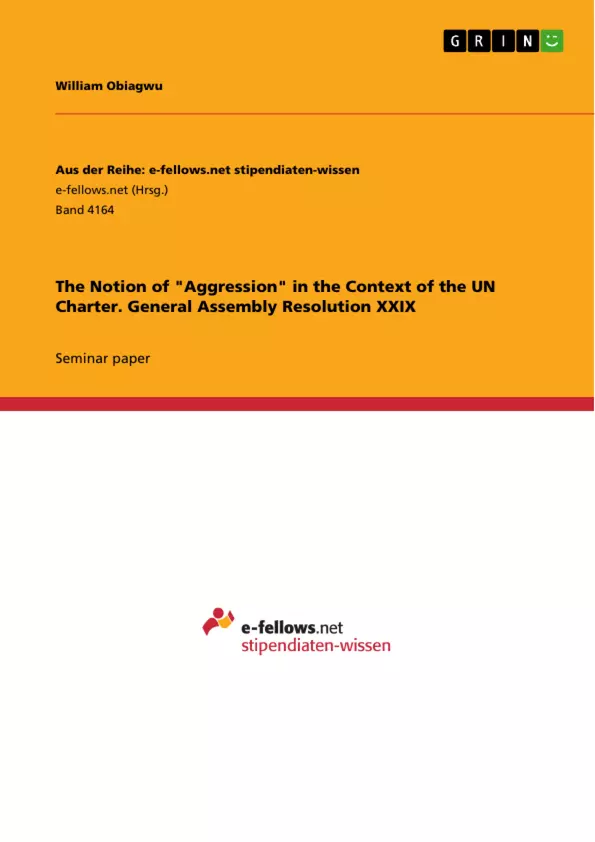This seminar paper set out to assess the meaning of Aggression in the context of the UN Charter and the overlapping prohibition of the use of inter-state force in international relation. It is hoped that this research will contribute to a deeper understanding of the impact and legal consequences of the notion of aggression. The United Nations General Assembly’s consensus definition of Aggression, annexed to General Assembly Resolution 3314 on 14. December 1974, is at the heart of our present understanding of the concept of Aggression within the United Nation Charter and manifests a “legal standard for distinguishing legitimate from illegitimate action”1 in international relations.
But since its adoption, the generic definition of Aggression has received considerable critical attention because of its ambiguities, inconsistencies, openness and conflicting interpretations. From this, the question arises if the long-lasting procedure of defining Aggression was useless as the consensus definition has not only not been fully integrated into the international legal system but also fails to deter future aggressors. In addition, much uncertainty exists about the conjunction between the consensus definition and the prohibition of the use of inter-state force.
Inhaltsverzeichnis (Table of Contents)
- Introduction
- The concept of Aggression
- Aggression in general
- Aggression in international relation
- Underlined assumptions
- The notion of Aggression in the context of the United Nations Charter
- The General Assembly definition of Aggression
- The procedural history: on the way to Resolution XXIX
- Analysis of the consensus definition
- Aggression and means of Aggression
- Prima facie evidence
- Acts Qualifying as Aggression
- Sanctions
- Right to Self-Determination
- The impact and the usefulness of the General Assembly's definition of Aggression
- The discretionary power of the UN Security Council
- The prohibition of the Use of inter-state Force
- Aggression and Self-Defence
Zielsetzung und Themenschwerpunkte (Objectives and Key Themes)
This seminar paper aims to examine the meaning of Aggression within the context of the United Nations Charter and its relationship to the prohibition of the use of inter-state force in international relations. It analyzes the General Assembly's definition of Aggression, particularly Resolution 3314 (1974), to assess its impact and legal consequences.
- The definition and scope of Aggression in international law
- The role of the UN Charter in regulating the use of force
- The General Assembly's definition of Aggression and its limitations
- The interplay between Aggression and the right to self-defense
- The impact of the definition on international relations and the prohibition of the use of force
Zusammenfassung der Kapitel (Chapter Summaries)
The first section explores the concept of Aggression in general, examining its various meanings and how it has been understood in different fields, including psychology and international relations. The second section dives into the procedural history leading up to the adoption of the General Assembly's definition of Aggression in Resolution 3314 (1974), providing insights into the motivations and challenges behind its creation. The third section delves into the analysis of the consensus definition, outlining key aspects such as its scope, the acts qualifying as aggression, and the sanctions associated with it.
Schlüsselwörter (Keywords)
This paper focuses on the concept of Aggression, the UN Charter, the General Assembly's consensus definition of Aggression (Resolution 3314), the prohibition of the use of inter-state force, international relations, and the right to self-defense. It examines the interplay between these concepts and the challenges of defining and regulating the use of force in the international arena.
- Quote paper
- William Obiagwu (Author), 2021, The Notion of "Aggression" in the Context of the UN Charter. General Assembly Resolution XXIX, Munich, GRIN Verlag, https://www.hausarbeiten.de/document/1254806


